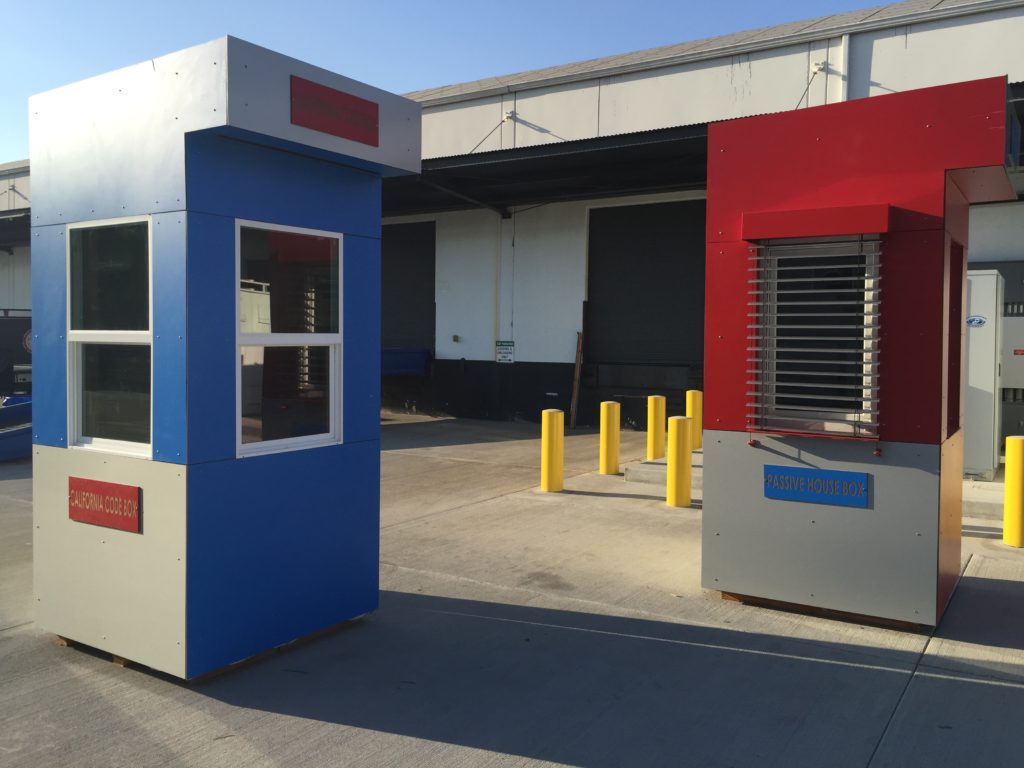The Ice Box Challenge Comes to L.A.
“Out of the Box: Architecture in a changing climate”, on September 6, 2018, 6:00pm, at the Architecture + Design Museum of Los Angeles, (A+D) will be the theme of the launch event for the Ice Box Challenge in Los Angeles. The Challenge will offer a science demonstration that invites the public to discover the benefits of high-performance buildings through a visually fun experience.
But what is the Ice Box Challenge?
Basically, it is a contest. It will be comprised of two small structures (5’x5’ – h: 11’), the blue one built to the Title 24 California Building Code, and the red one, built to the Passive House (PH) Standard optimized for the local climate. Each Ice Box will contain 500 pounds of ice. The Ice Boxes will be left outside for 7 days (between September 6th & September 13th), and then opened, measuring the amount of ice left in each box. The more ice left, the better, as it will show the efficiency of the Ice Box to keep the summer heat out.
And what is the Passive House Standard?
The PH standard is the leading international low energy building standard with more than 65,000 buildings around the globe in all climate zones, delivering a very high level of comfort with very low energy consumption. The buildings use up to 90% less energy for heating and cooling than other buildings do, while maintaining good indoor ventilation and air quality. They are easy to maintain, as well as affordable to build, own, live in and work in.
So, how does Passive House work?
Passive House is a scientific integrated concept developed by the International Passive House Institute (PHI), an independent research institute, and which works for all type of buildings (single family houses, multi-family buildings, commercial buildings, museum, hospitals, hotels, museums, schools, etc.).
To be certified by the Passive House standard, a building needs to respect 5 principles: climate specific insulation levels, thermal bridge free connections, high performance windows & shades, airtightness and continuous ventilation.
How is Construction Progress involved in this Icebox Challenge?
Construction Progress wanted to illustrate the best way to choose the right shades by providing 2 venetian blinds. The one on the Passive House box (red box) is an External Venetian Blind placed in front of the window. On the Title 24 California Building Code box (blue box), it’s an interior blind, same orientation, same material (aluminum) and same color. These blinds prevent the solar energy from melting the ice inside, but with a very different result.
Why external venetian blinds are much more efficient than interior blinds?
The External Venetian Blind can reduce drastically the amount of energy coming from the sun compare to the interior shade. Only 12% of the sun energy will come inside the red box. The interior venetian blind will obviously reduce the heat too, but it is 3 x less efficient, as 35% of the sun energy will pass through the interior blind. This comparison will also demonstrate the possibility to reduce the energy consumption by simply adding shades at the right place.
When can the results of this challenge be seen?
Construction Progress
Together for a Brighter Future
